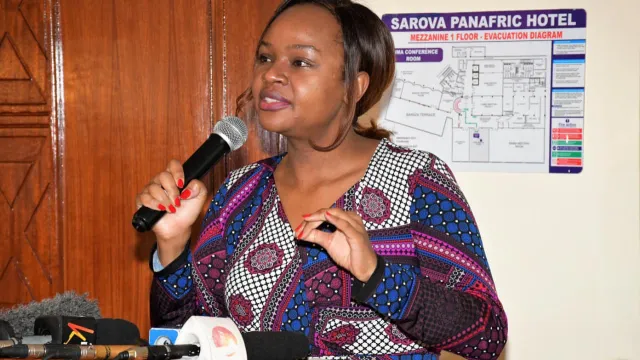Kenya's malaria prevalence down by two per cent in five years—survey

Kenya's malaria prevalence down by two per cent in five years—survey
Kenya is making commendable progress in the fight to eliminate malaria by 2030 with the latest survey indicating that the prevalence of the tropical disease has contracted by two per cent in the last five years.
The 2020 Kenya Malaria Indicator Survey (KMIS) survey released by the Division of National Malaria Program yesterday shows the prevalence of the disease at 6 per cent compared to 8 per cent recorded in 2015.
The Chief Administrative Secretary in the Ministry of Health, Dr Mercy Mwangangi, said the drop is attributed to constant surveillance, roll out of prevention measures, and the management of malaria cases.
“This 2 per cent drop in national malaria prevalence can be credited to the continued surveillance and epidemic preparedness efforts mounted by the team at the national malaria program, the county malaria teams, and other partners working collaboratively with the ministry,” noted Dr Mwangangi.
However, the Lake region counties of Siaya, Kisumu, Migori, Homa Bay, Kakamega, Vihiga, Bungoma, and Busia, which are the endemic zones still recorded a significant higher burden of the disease at 19 per cent with low-risk areas having only 1 per cent.
Read also: Kenya’s fill-and-finish vaccine plant to open in April
Among children aged 6 months to 14 years, the survey found a higher malaria prevalence among rural children at 7 per cent than urban children at 3 per cent.
The report also captured research on prevention of the tropical disease among pregnant women with the findings showing an increase in the uptake of three or more doses of intermittent preventive treatment in targeted endemic areas.
In the Lake endemic zone, uptake increased to 49 per cent, a 14 per cent jump from 2015, and 49 per cent in the Coast endemic zone, a 3 per cent rise from 2015.
“As Kenya aims to have at least 80 per cent of all pregnant women living in endemic zones receiving at least three doses of IPTp and sustain adherence to policy guidance in non-endemic areas, efforts towards realizing this target must be strengthened and sustained,” said Dr Mwangangi.
She, however, noted that key interventions such as the ownership and use of insecticide-treated net (ITN) have seen a downward trend from the previous survey conducted in 2015.
“The percentage of households owning at least one ITN decreased to 49 per cent from 63 per cent in 2015. Similarly, the percentage of the household population who slept under an ITN the night before the survey decreased to 35 per cent from 48 per cent in 2015.”
Further, Dr George Githuka, the head of division of the national malaria program acknowledged that the coronavirus pandemic had affected the implementation of some of the intervention measures which include seeking medication.
“Due to COVID-19 pandemic, we haven’t been able to distribute insecticide-treated bed nets, due to the restriction measures. Also, the pandemic is associated with fever so some individuals refused to seek medication in health facilities fearing that it could be coronavirus or they would contact the virus in health facilities,” Dr Githuka said.
“Even with the COVID-19 pandemic, we have ensured we continue with the distribution of insecticide-treated bed nets, the availability of medicines at our health facilities and, indoor residual spraying whilst following COVID-19 protocols,” he added.
Malaria is one of the world’s most deadly diseases. In Kenya, the disease is the main cause of death among children under the age of five.
On October 31, 2020, President Kenyatta launched the “Zero Malaria Starts with Me” campaign to accelerate the implementation of his four-point anti-malaria agenda to eliminate the disease by 2023.
According to the World Health Organization (WHO), malaria still remains a deadly disease, more than even the novel COVID-19 in Africa, with data showing it killed about 386,000 people in the continent in 2019, compared with 212,000 confirmed deaths from COVID-19 in the past 18 months.
Malaria also remains a primary cause of childhood illness and death in sub-Saharan Africa, claiming the lives of over 260,000 children in Africa under the age of five annually.
Earlier in the month, the WHO gave hope of a breakthrough of the killer disease after it okayed the use of RTS,S vaccine to children in Africa.
“This is a historic moment. The long-awaited malaria vaccine for children is a breakthrough for science, child health, and malaria control,” said WHO Director-General Dr Tedros Adhanom Ghebreyesus. “Using this vaccine on top of existing tools to prevent malaria could save tens of thousands of young lives each year.”



